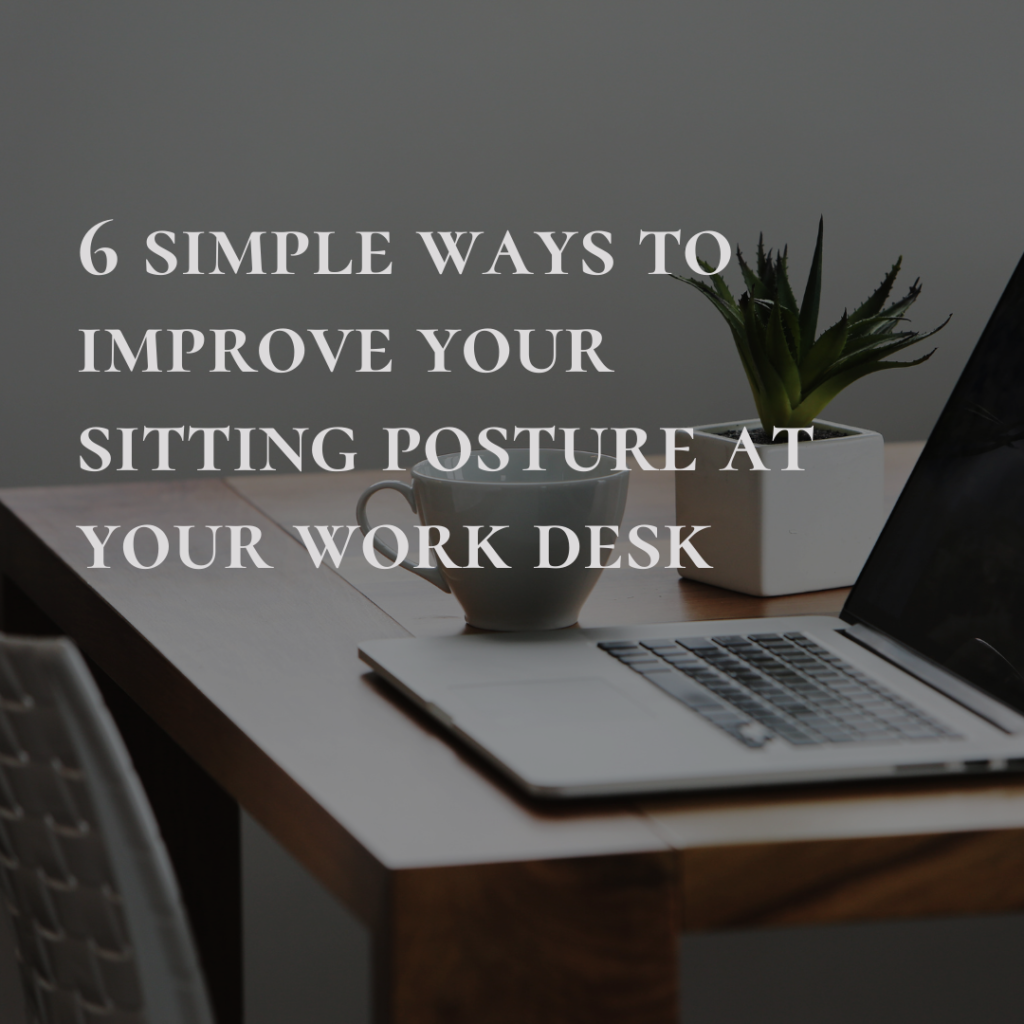If there is one thing this generation suffers from, it is poor posture. Take a look around you and observe keenly the people around your environment. You would see people with poor sitting, standing and walking postures.
In your work place, you would have noticed people hunched over their seats, with their backs bent.
You’re probably currently sitting at your desk reading this, blissfully unaware of your posture right now—and that’s perfectly normal. It can be difficult to always be mindful of your posture, especially during a hectic workday through hours of Zoom meetings and conference calls.
Your posture is a very important indicator of your overall health, as it supports blood flow, improves your mood, increases your confidence, and strengthens your other muscles and joints. Practicing better posture while at your desk at work or at home, even in the smallest ways, is a great way to be mindful of your health on a daily basis.
Here are a few quick ways you can improve your posture as you go along your workday.
1. Switch up your seating
Your seating can make or break your posture—literally. Seating with little to no back support, worn-out chairs, and working from your couch or bed could wear on your body over time, straining your shoulders, spine, and lower back.
If your desk chair doesn’t have the support you need to sit comfortably and in an upright position for an hour or two at a time, you may need to switch up your seating.
A good, ergonomic chair for your workspace will have lumbar support to help the middle of your back, where most of the tension goes when you’re hunched over your desk. You also want to pick a chair that keeps your body at a neutral, upright position with an adequate seat height that keeps your arms and legs leveled and a backrest that isn’t too firm or too soft.
If you’re now working from home, make sure to be mindful of where and how you’re sitting. Set up your own workspace with a desk and chair that supports your back and shoulders and promotes better posture over time.
As much as you can, avoid working from your bed. Your spine will thank you.
2. Take frequent stretch breaks
It’s easy to get wrapped up in your workday and forget to move, so set an alert on your work calendar or on your phone as a regular reminder to take a break and switch up your posture by taking a walk, standing briefly in between meetings, stretching, or getting a quick exercise in.
Spending hours upon hours every day in a seated position where your back is either slouched or hunched over is detrimental to your posture. Many health professionals have declared that sitting has now become the new smoking, a popular myth that compares the negative chronic health effects of both, such as weight gain and diabetes.
Prolonged sitting can have long-lasting effects on not only your back but also on your overall health.
Make it a priority to get up and move around on a regular basis throughout your workday to give your body some relief from sitting and staring at a screen all day. Put yourself on a daily schedule to get some time away from the desk so you can give your back a break from sitting in an upright position, putting more pressure on your spine.
3. Exercise for better posture
When we exercise, we often forget to exercise for better posture, especially as working from home becomes more prevalent. Your posture is key to better overall health, and taking time to focus on it during your workday can help prevent lifelong body issues.
Exercising throughout the workday for better posture can be as simple as standing upright for an hour or two at a time at your desk, stretching and rotating your neck to relieve some of the tension from hours of working, or getting a good back bend at the waist to loosen up that lower back.
Give yourself a few small breaks during the workday to work out those kinks in your shoulders, neck, and back from sitting too long, and focus on exercises specifically for those areas.
4. Keep your workspace eye level
Hunching over your desk to look at your laptop or to type is one of the key indicators of poor posture. If your laptop or desktop computer isn’t eye level, it makes it easy to slouch and get stuck working that way for hours.
Do an overall assessment of your workspace, including your laptop, your monitor, your desk, and your computer accessories like your keyboard and mouse to make sure they are level to your eyesight and body to ensure that you’re not straining your neck, shoulders, and back to use your devices.
Your workspace should be at a comfortable level but upright enough where your posture isn’t compromised. Switch up the positioning of your workspace so that it’s easier to sit upright while still being effective throughout the day. If you work remotely or from home, find a better place to set up your workspace like on a high bar-style countertop where you can easily sit in an upright position, or even stand and work for a change of pace.
5. Be intentions about your sitting posture
Taking the time to connect with your body every so often throughout the day to see how it feels can seem like another item for your to-do list, but your back will definitely thank you for it!
Practice being mindful of your posture throughout the workday by setting frequent reminders on your phone to check in with your body.
Use this mindfulness to be more aware of your posture on a daily basis and when you place the most tension on your back. Do you find that your posture suffers during long Zoom meetings? Are you sitting for more than two to three hours at a time in the mornings or afternoons? Take note daily of all of your workspace habits and how it impacts your posture and your overall body. This will help you anticipate and be more mindful of your posture during the most stressful times of your day and prepare to change it up.
6. Keep your feet flat on the floor
Your feet and their position while at your desk play a crucial role in your overall posture while sitting. If your feet are crossed or elevated, that could compromise your posture, as your weight is primarily on one leg or your back is taking the brunt of it.
When your feet are flat on the floor and properly leveled, the weight of your body is evenly distributed across your hips. Keeping your feet flat on the floor also makes you more mindful of the overall stance of your body, as it unconsciously makes you straighten up.
Practice keeping your feet fully on the floor for longer periods of time instead of elevating them using a footrest or crossing your legs at the knees underneath your desk. Planting your feet on the ground will help you be more aware of your posture and if you’re slouched or hunched over your desk.
Your posture is a key indicator of your body’s health during your workday. Don’t ignore any signs of back or shoulder pain; make it a point to take care of yourself while working, starting with your posture
Which of these tips do you find helpful?
Which of these tips would you start practicing today?
What other useful tip would you like to add? Please share with us in the comment box below.



